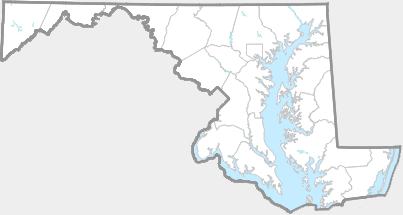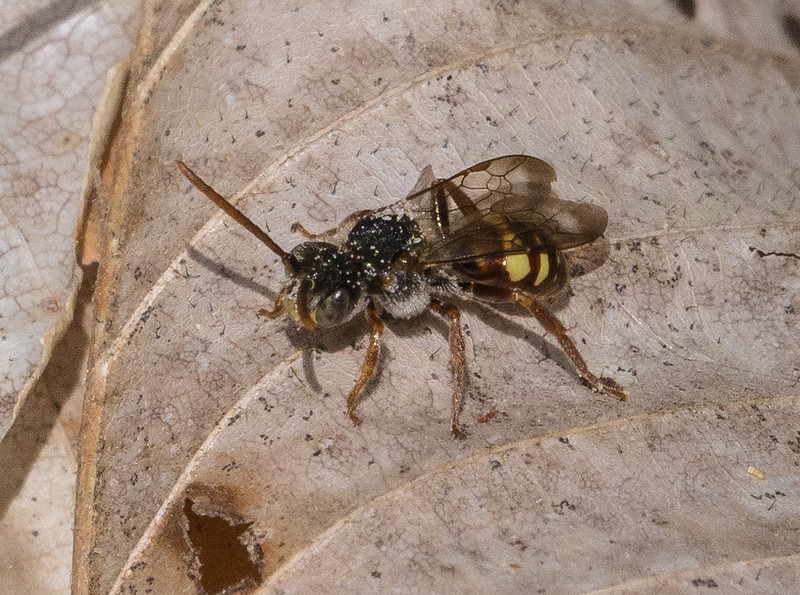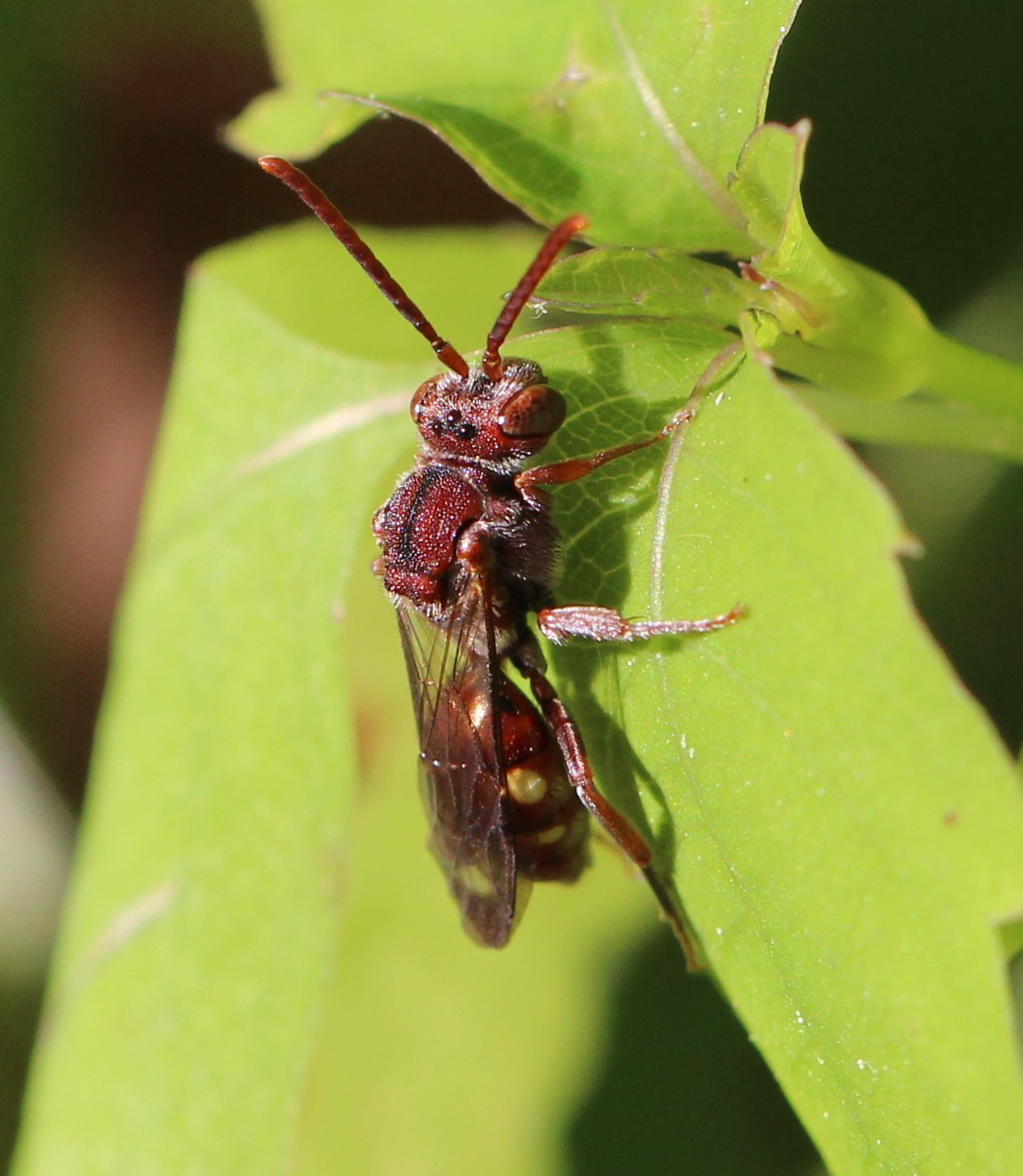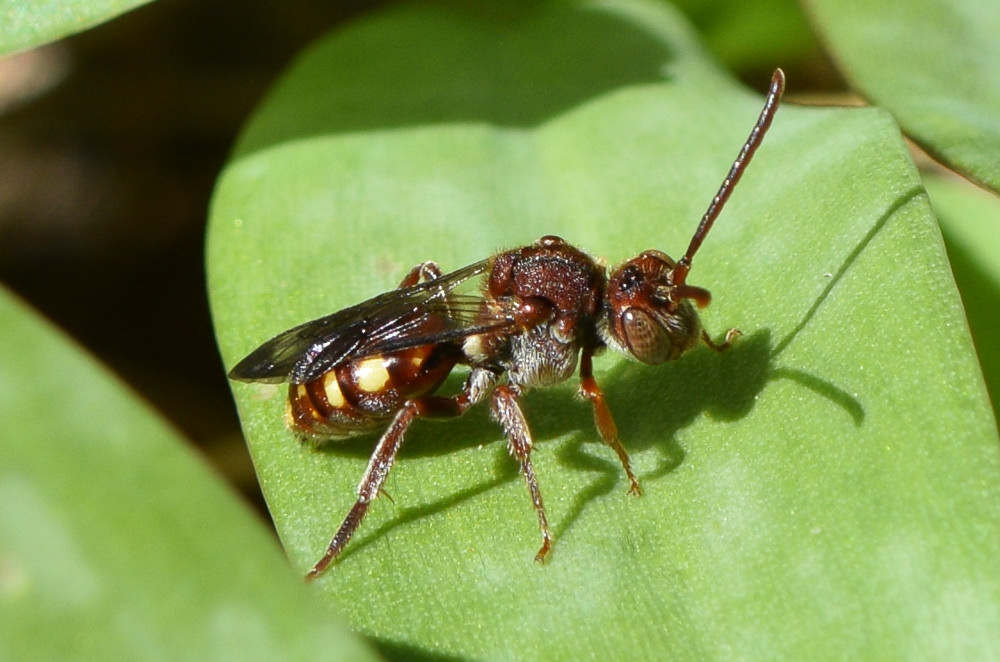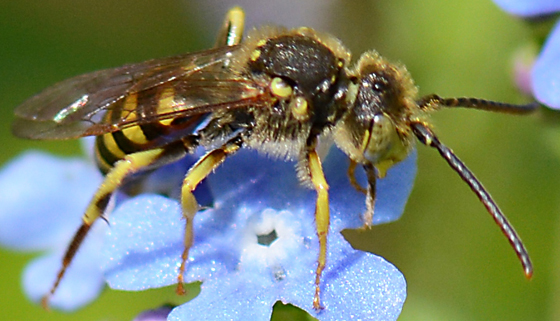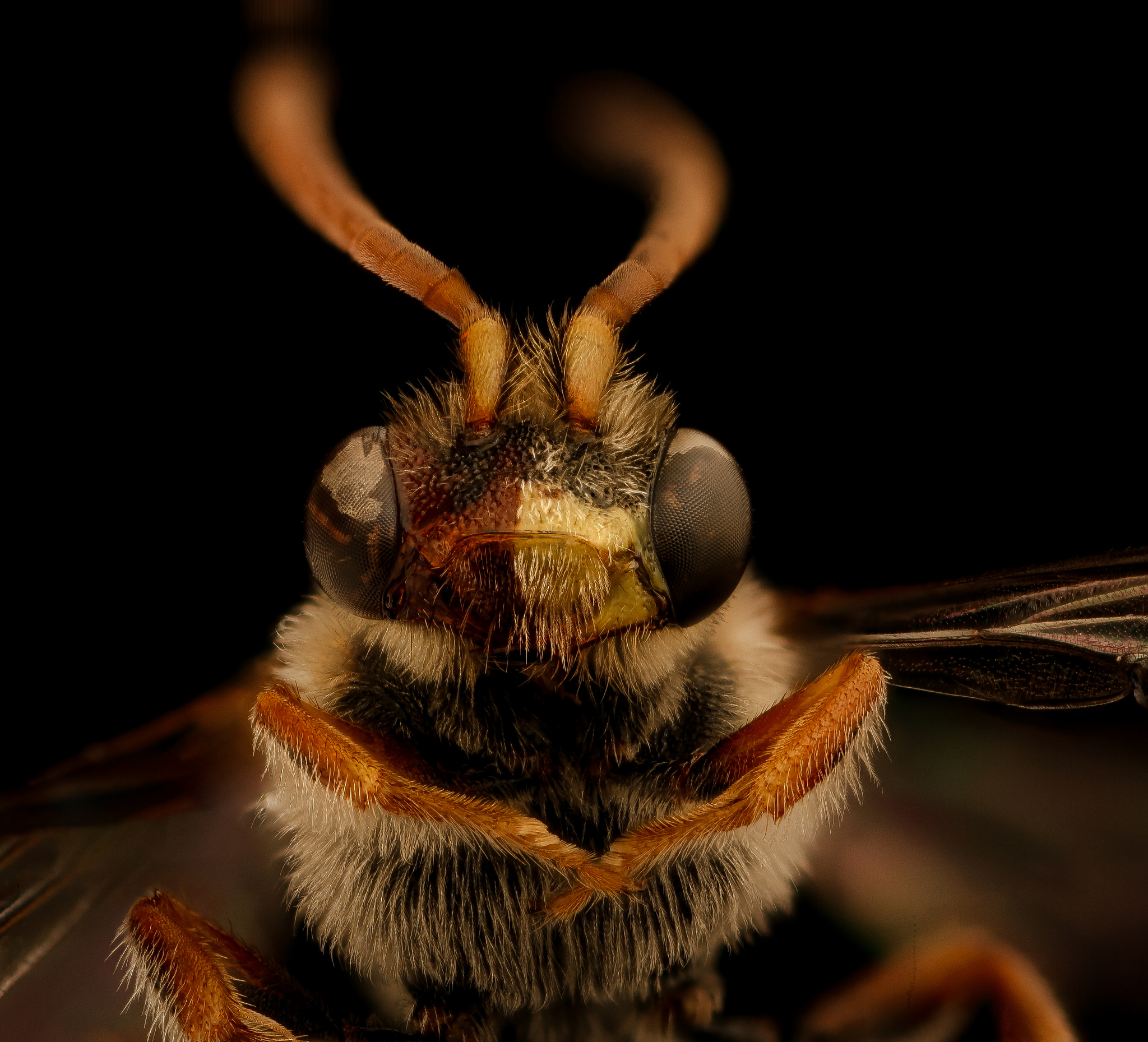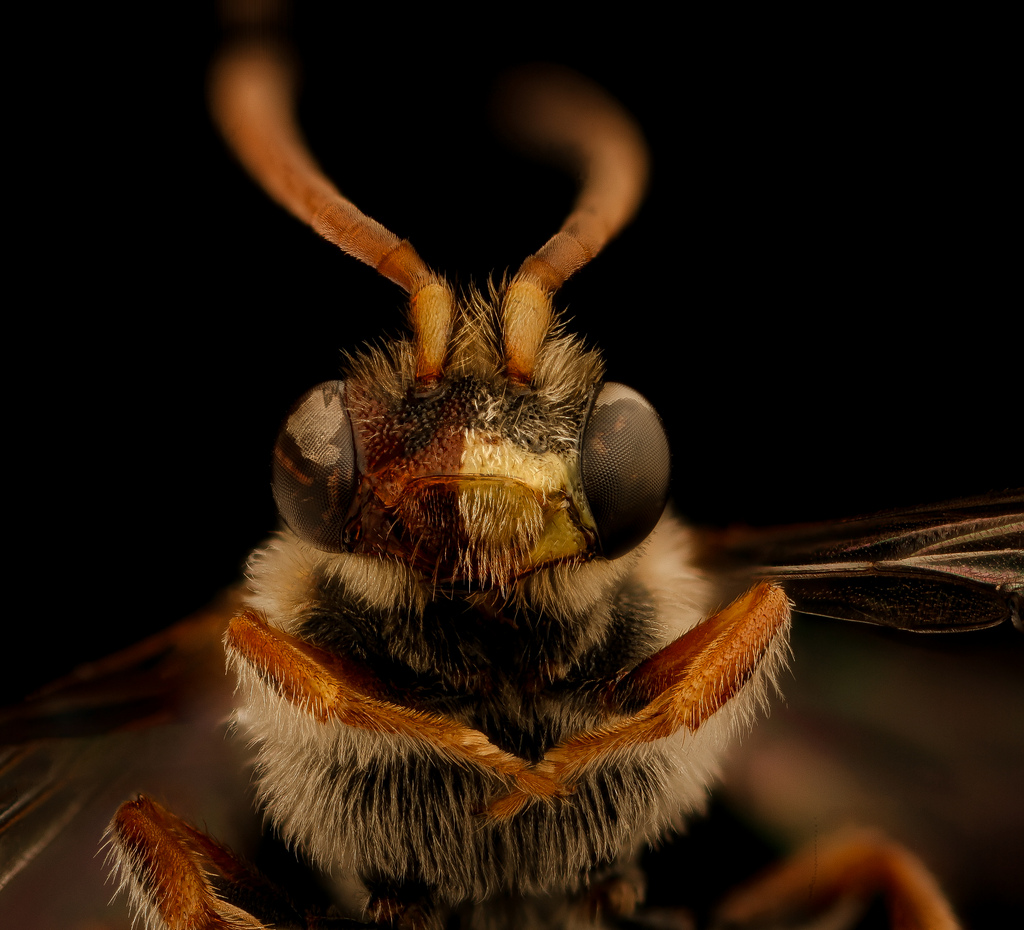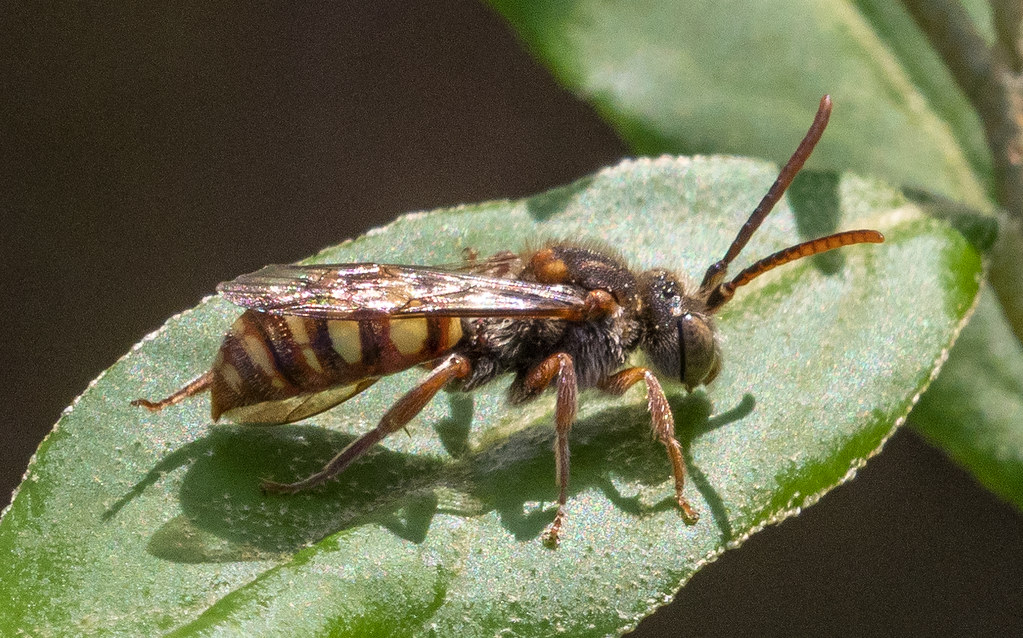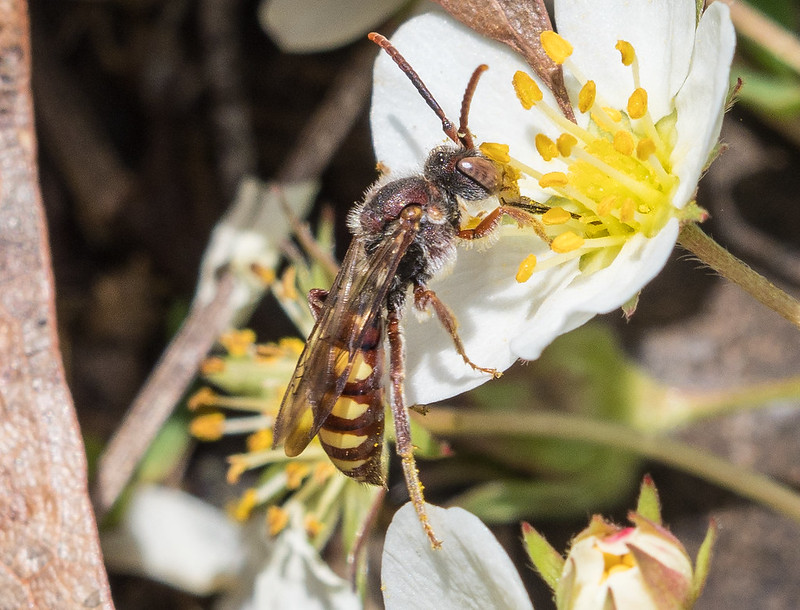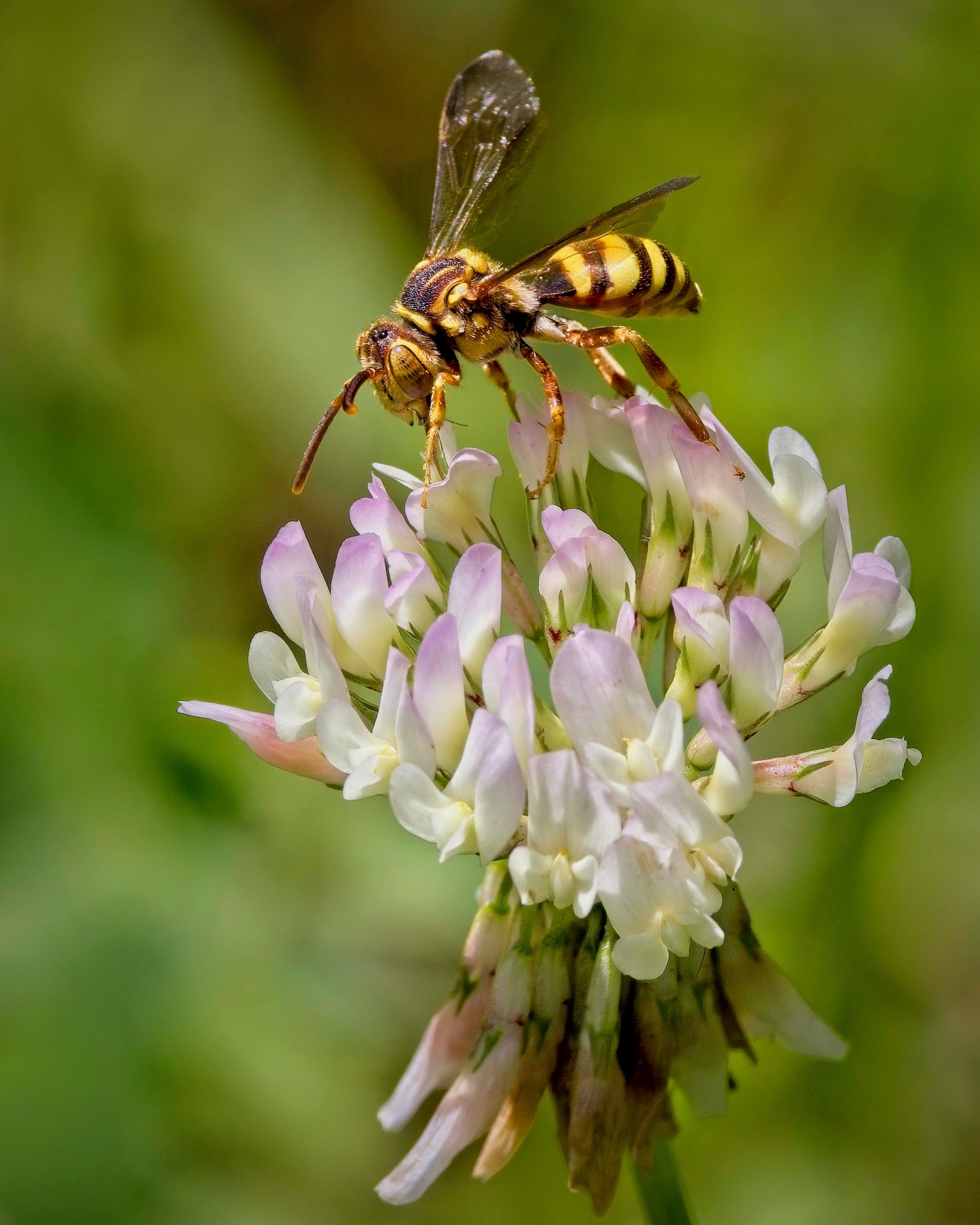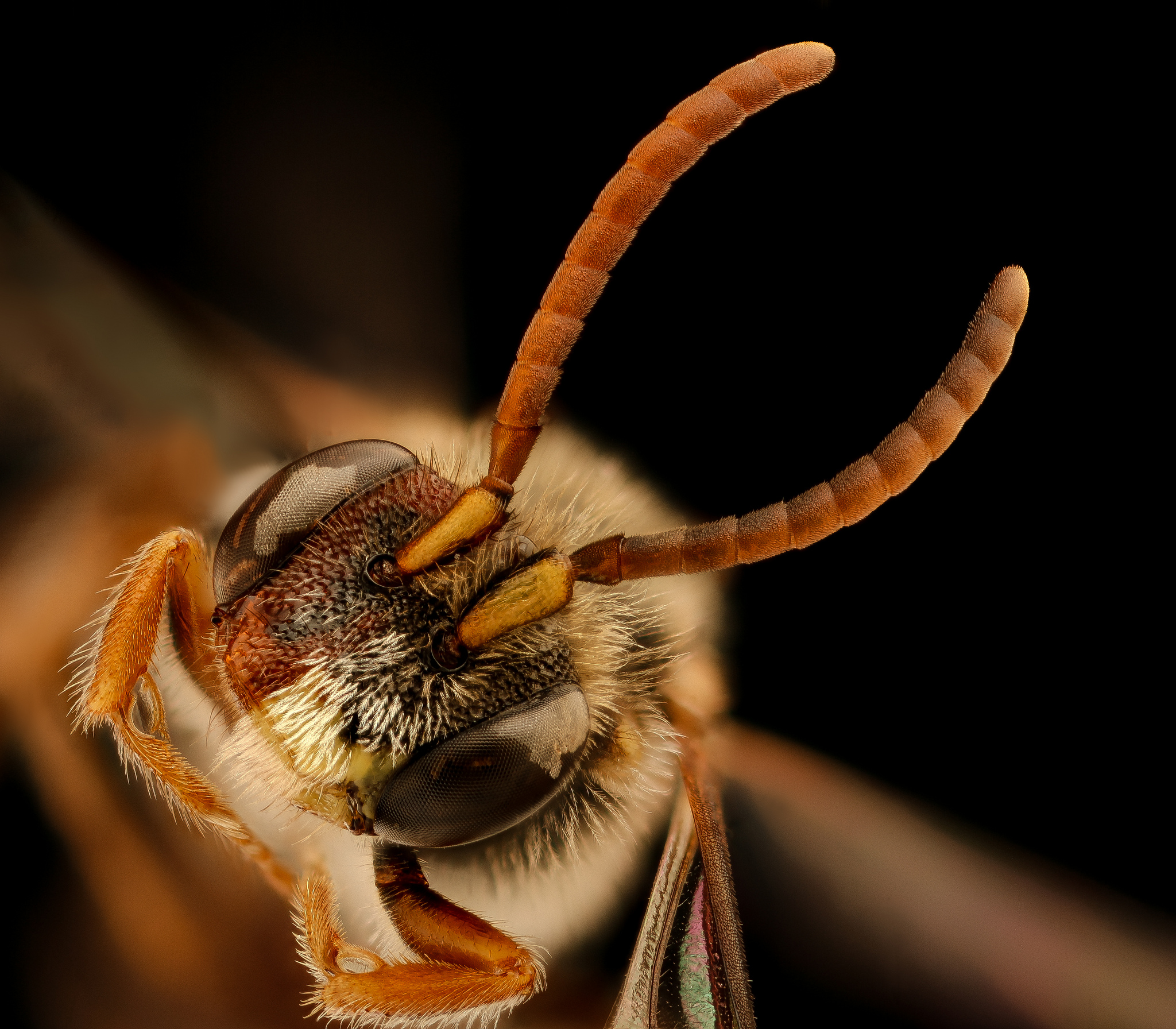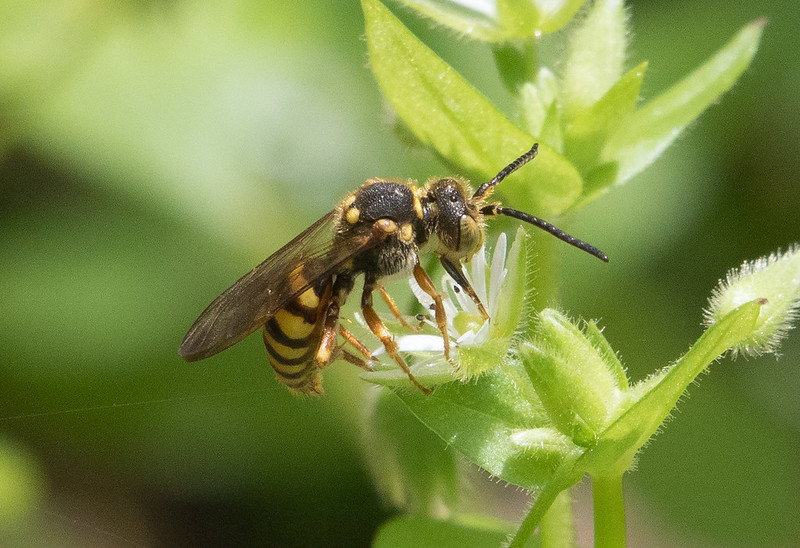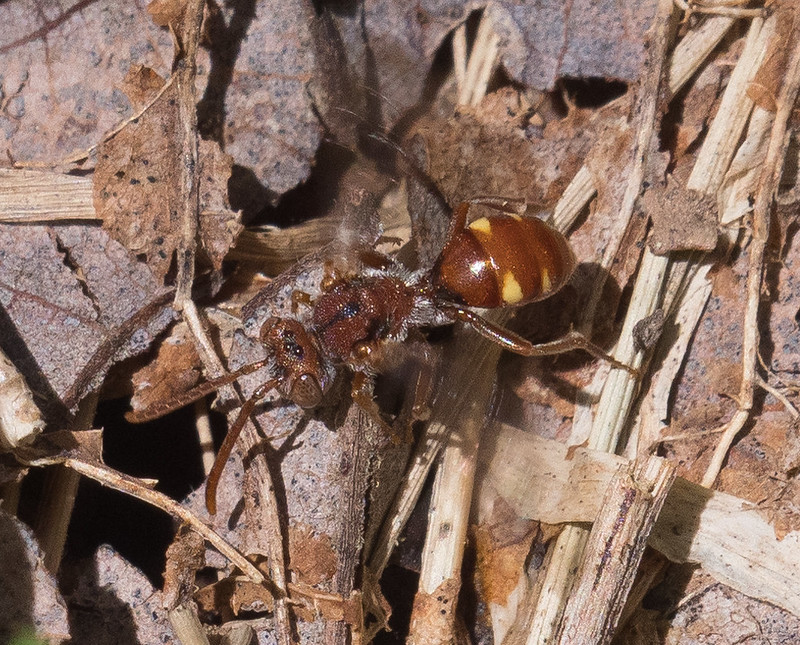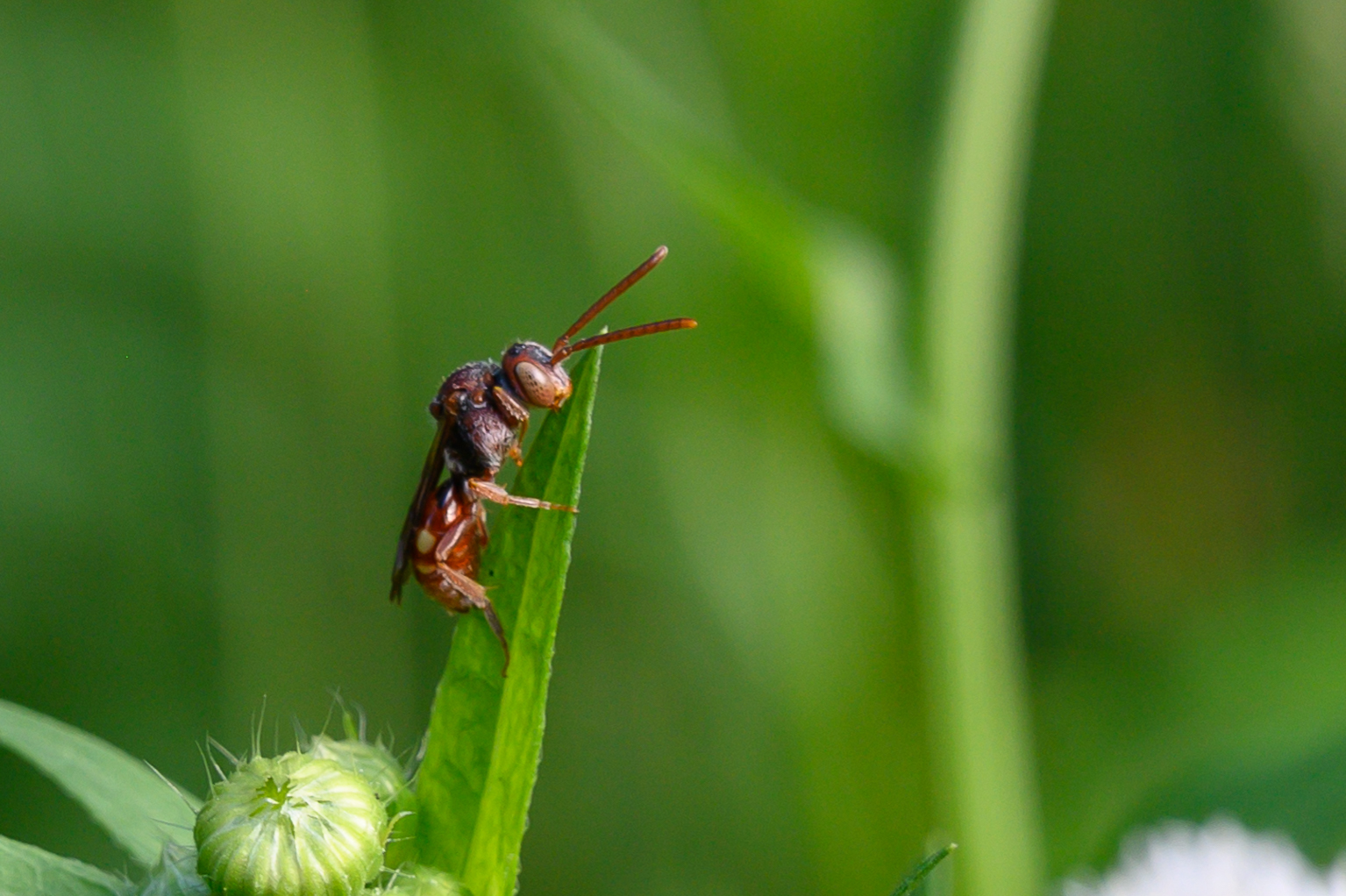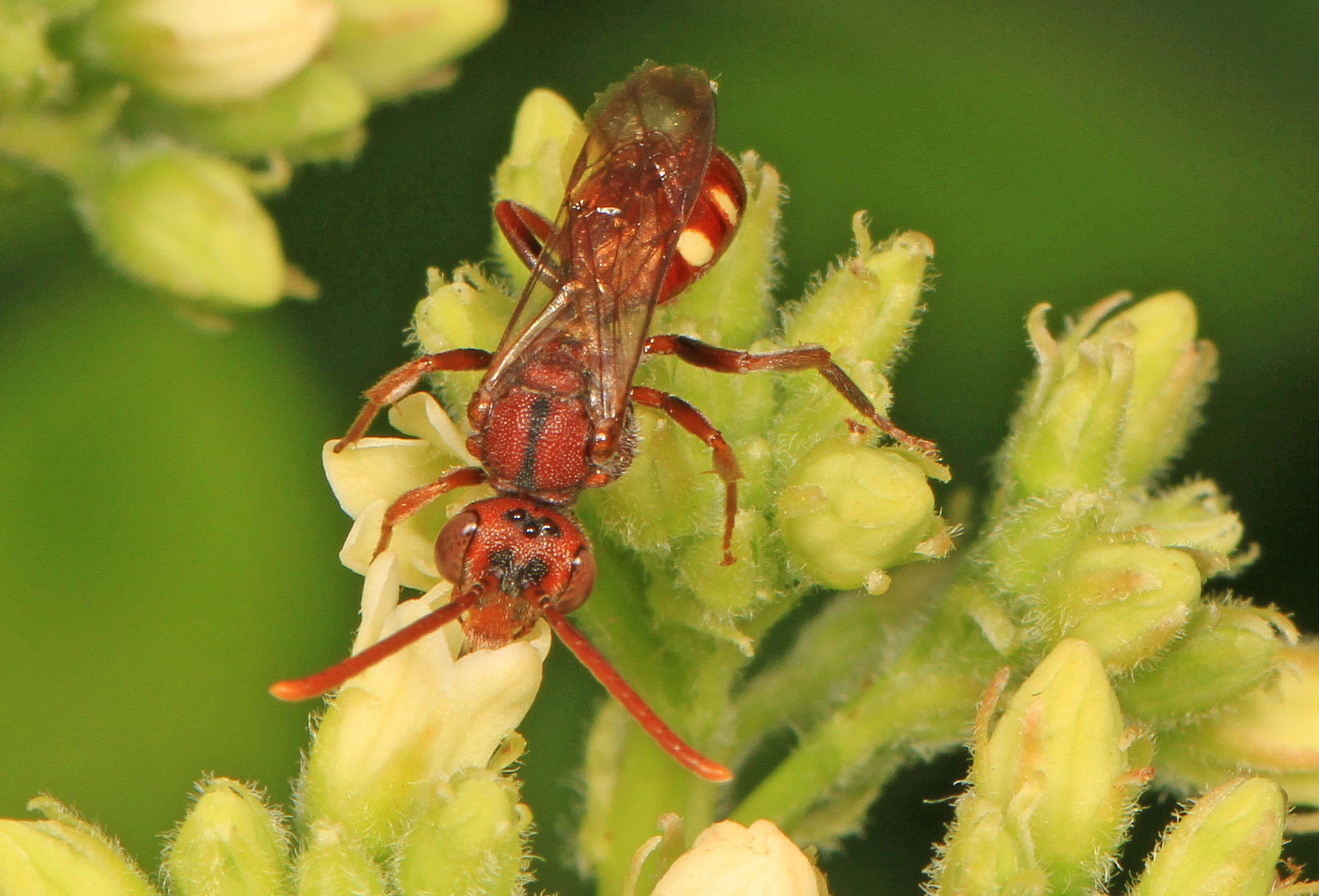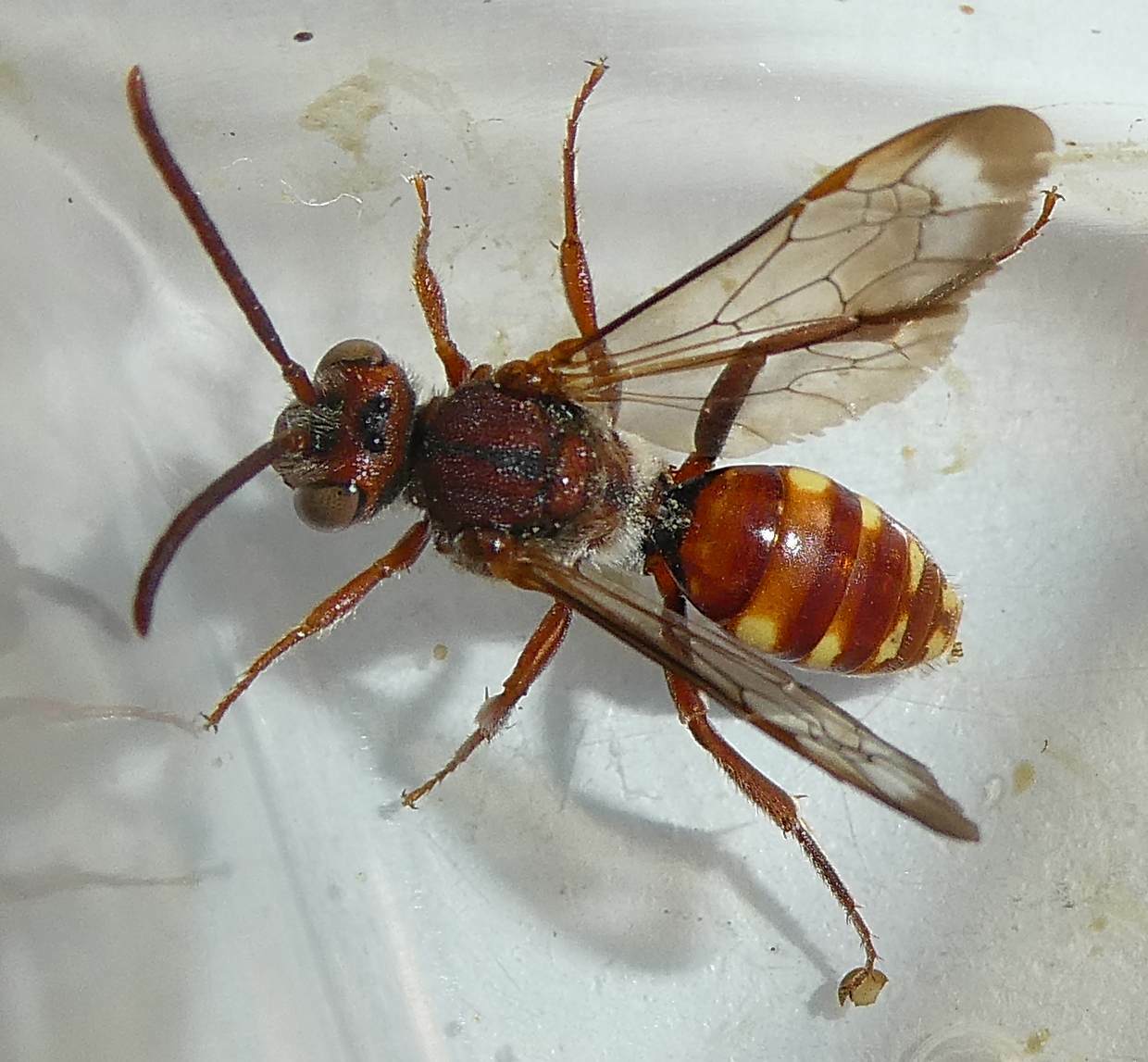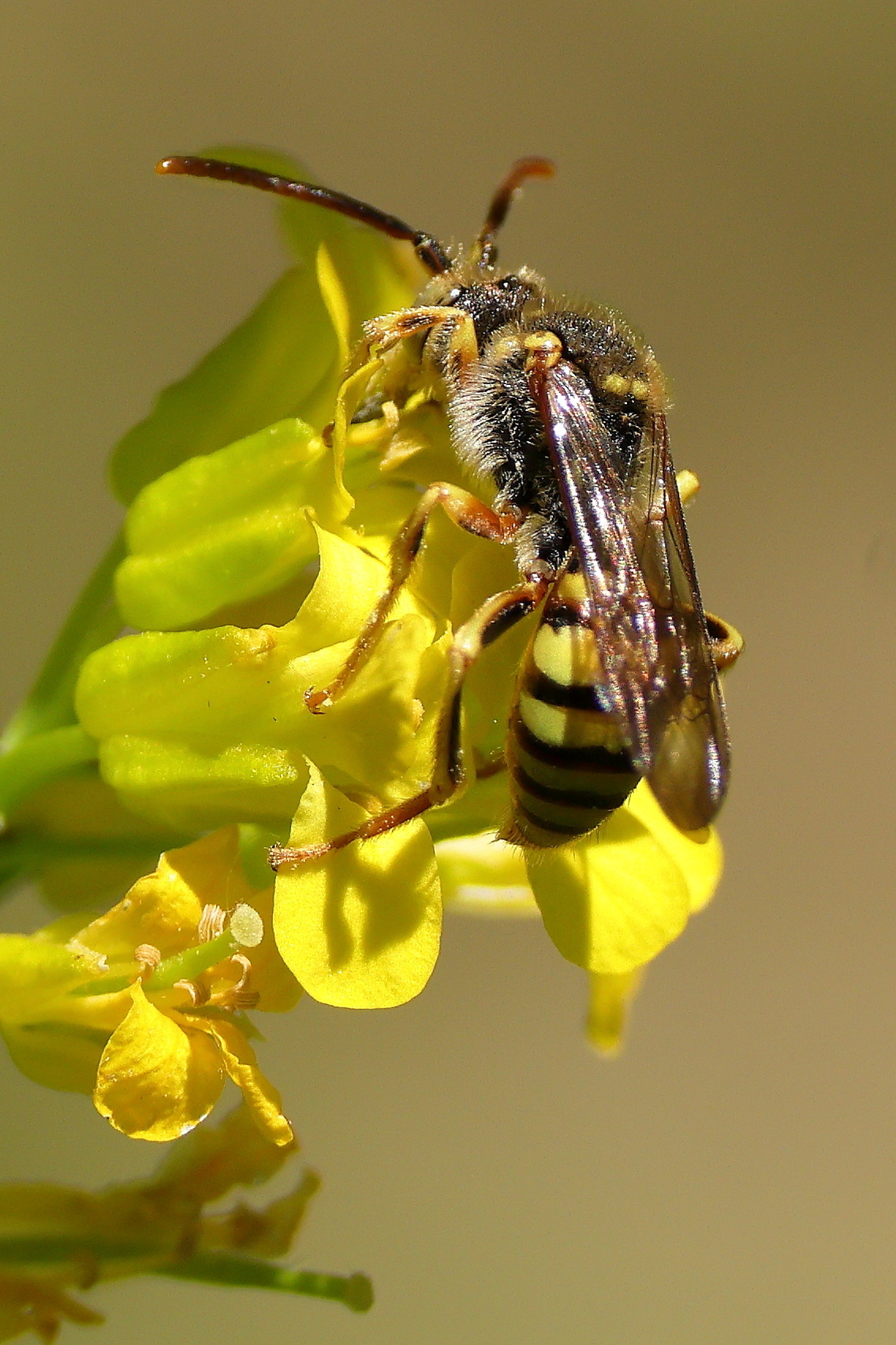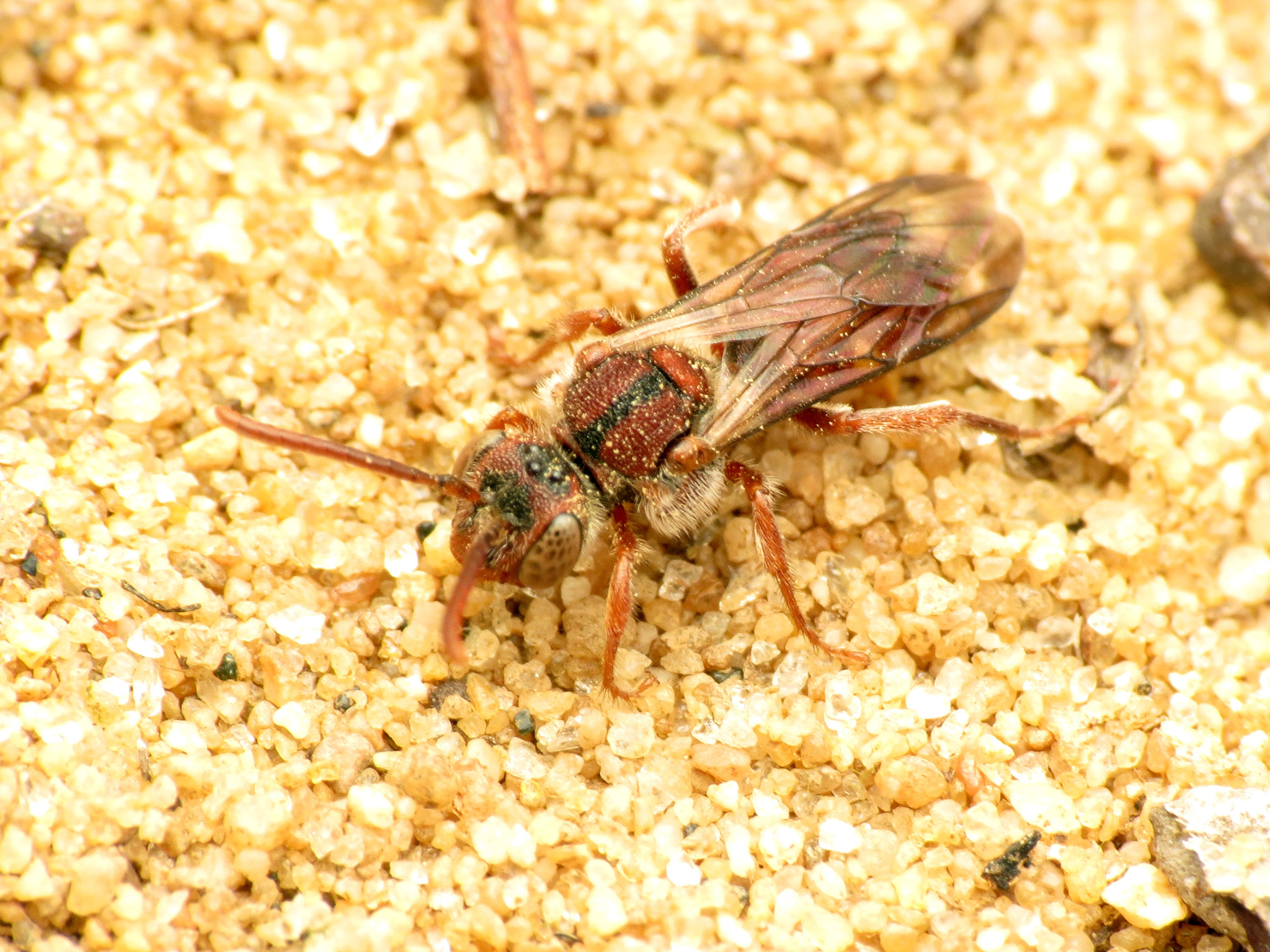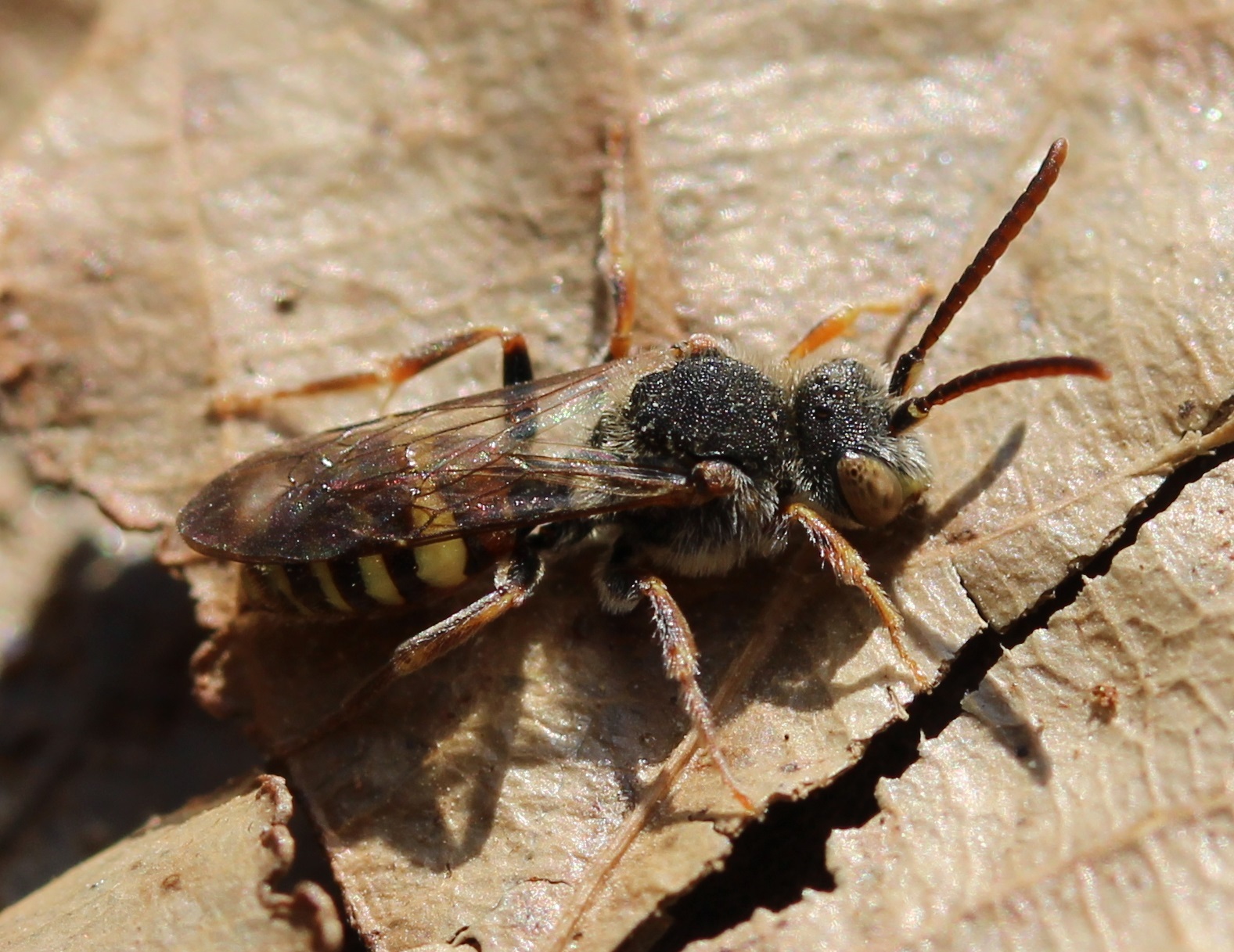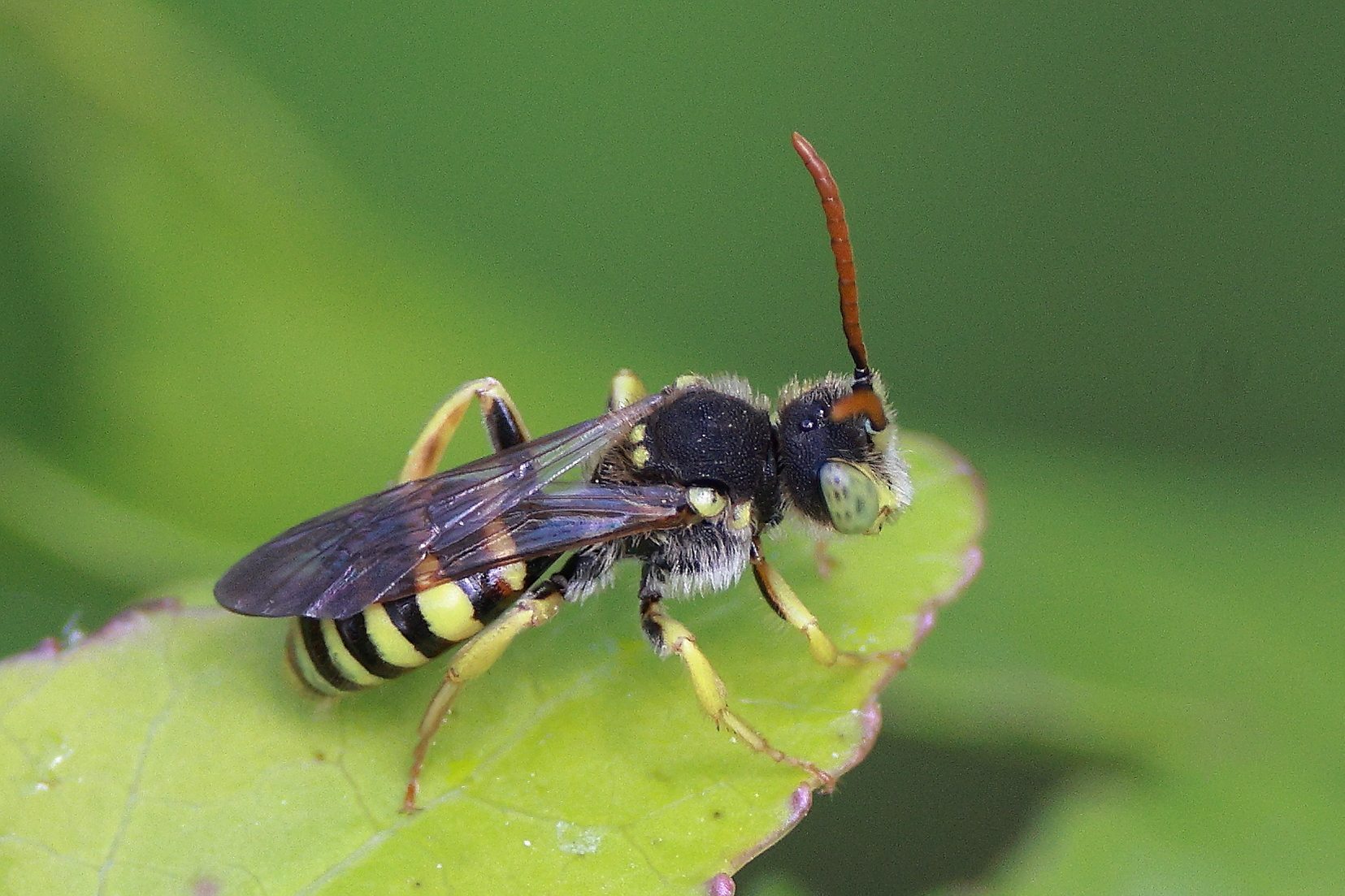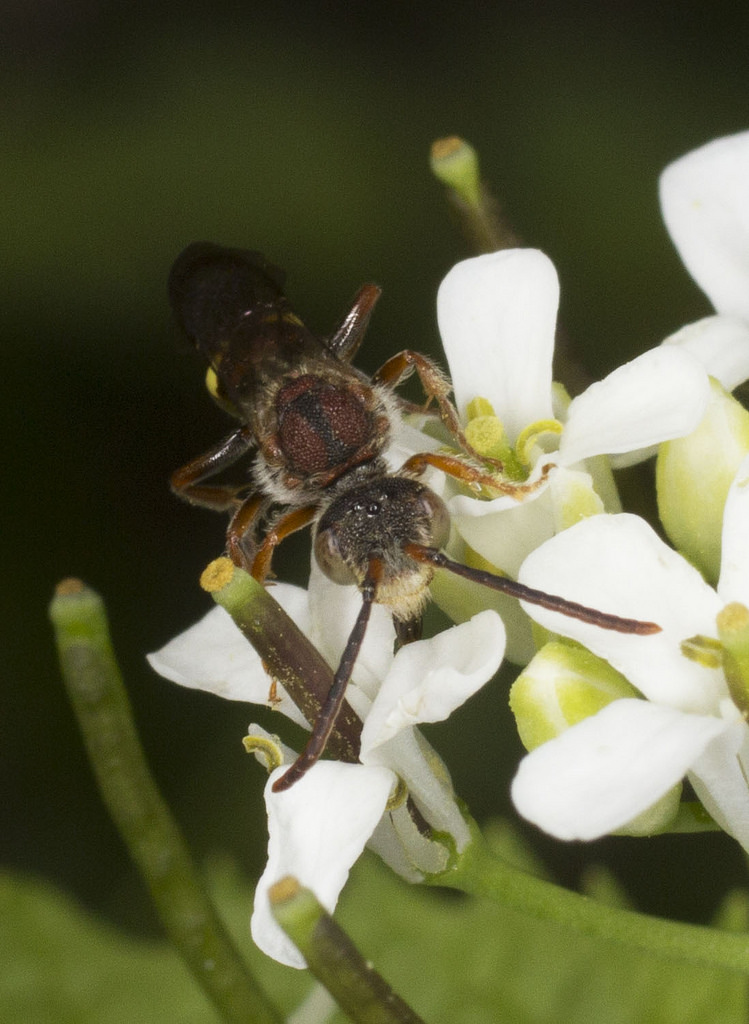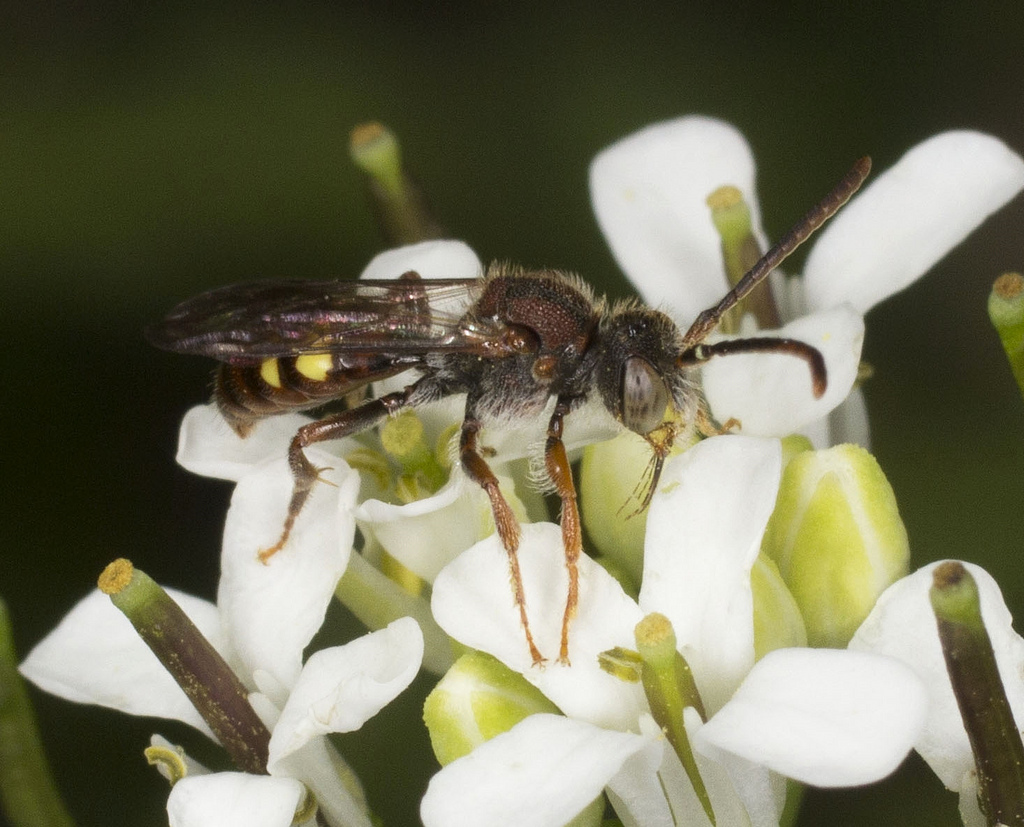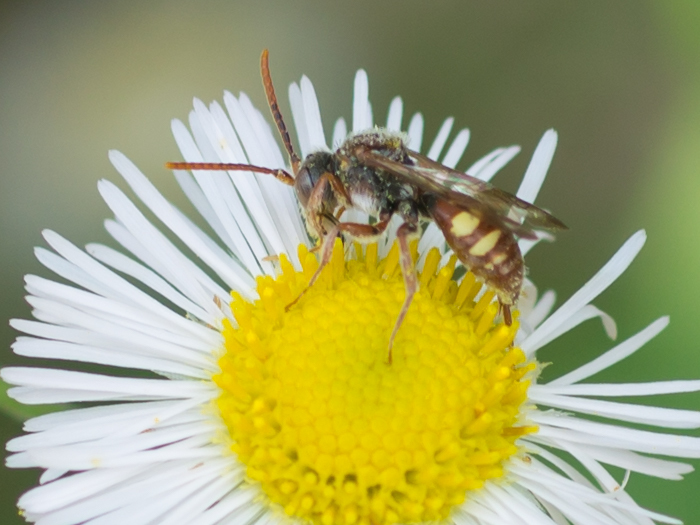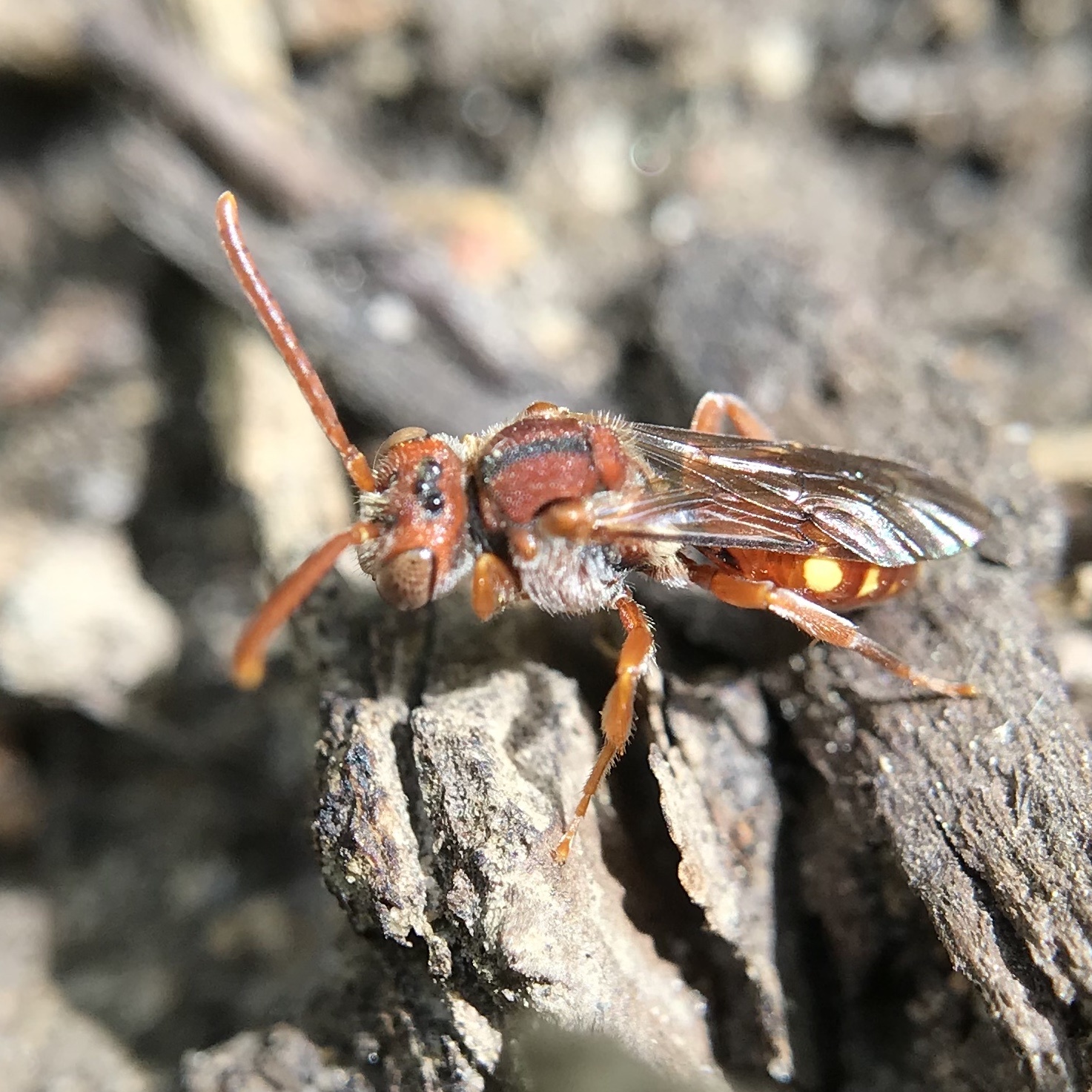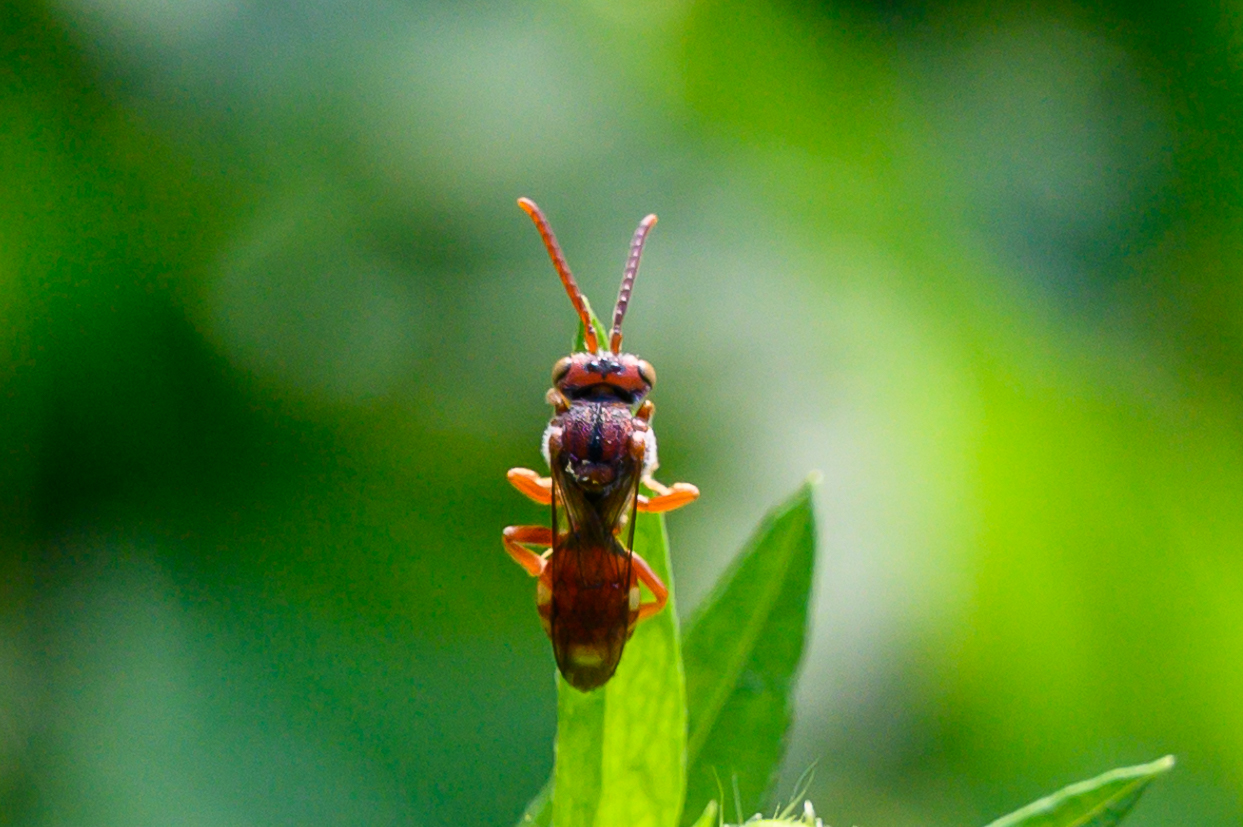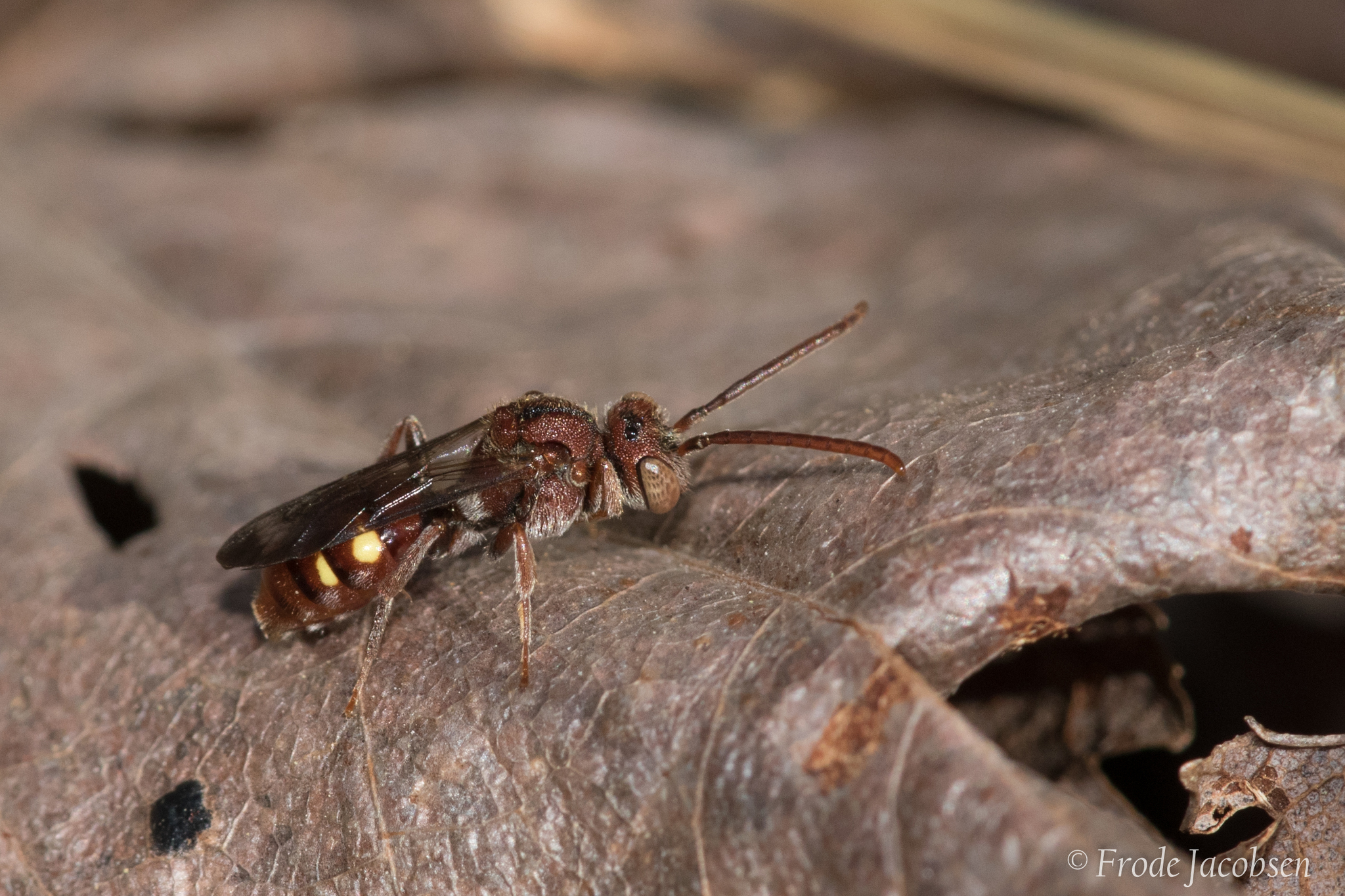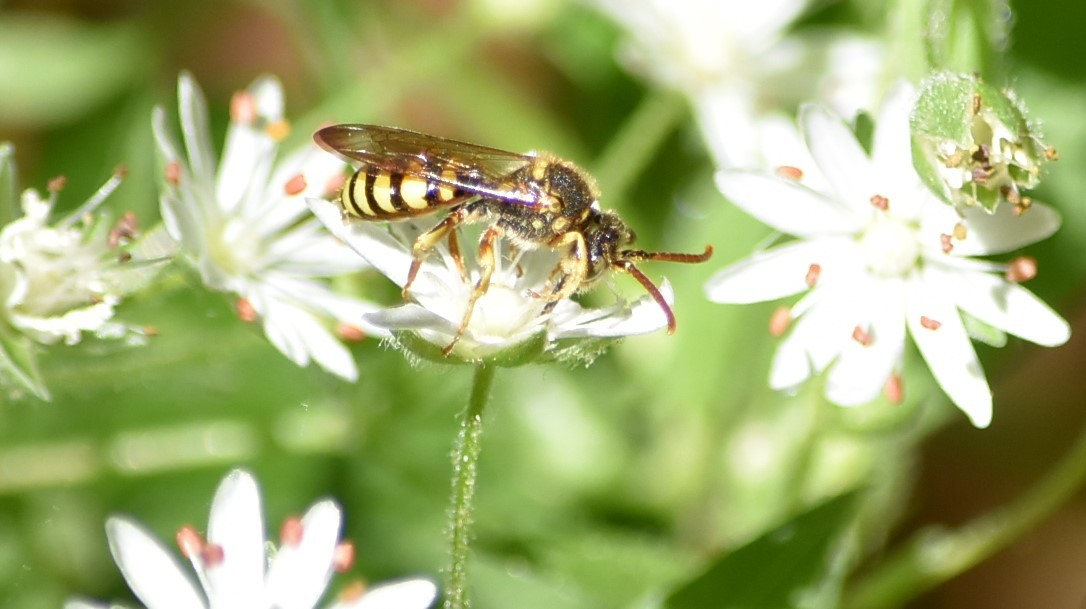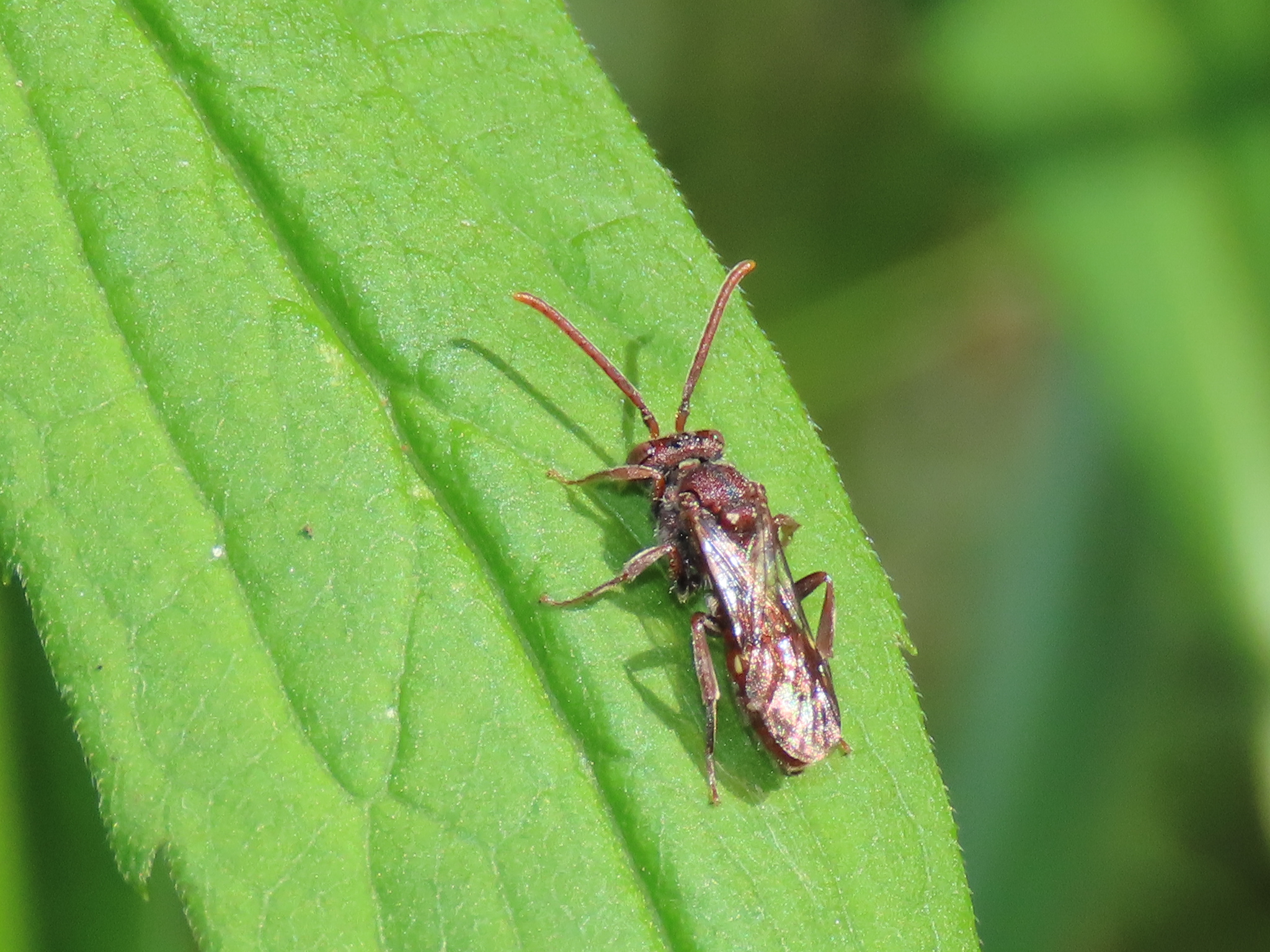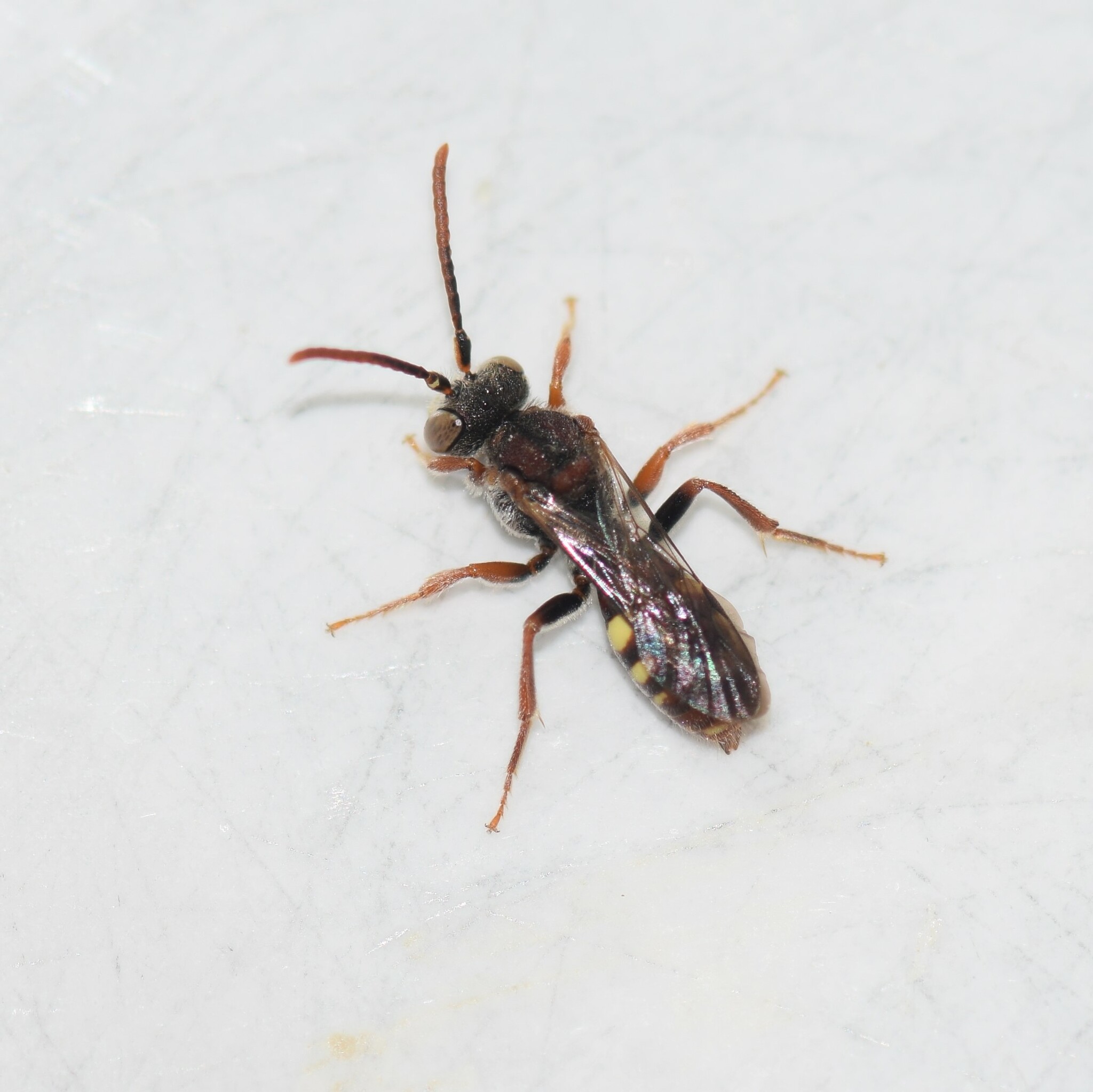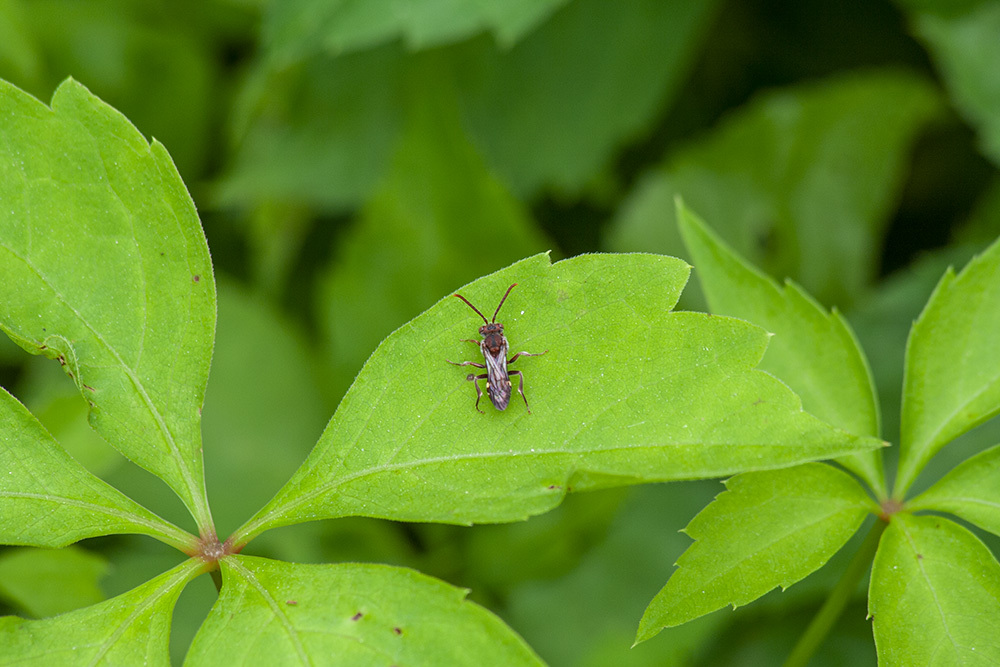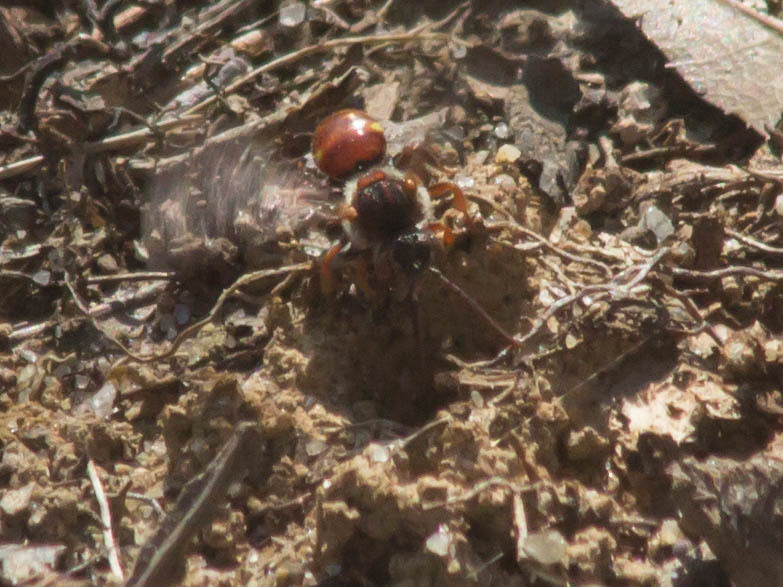|
| GA | AL | WA | FR | CL | MO | HO | BA | BC | HA | CE | PG | AA | CV | CH | SM | KE | QA | CN | TA | DO | WI | SO | WO |
A Nomada species in Charles Co., Maryland (4/5/2020). Determined John S. Ascher and Bob Biagi/BugGuide. Photo by
Jim Moore. (
MBP list)

A Nomada species in Harford Co., Maryland (5/2/2021). Verified by Trevor Sless/iNaturalist. Photo by
Dave Webb. (
MBP list)

A Nomada species in Baltimore Co., Maryland (4/23/2017). Determined by Ken Wolgemuth/BugGuide. Photo by
Emily Stanley. (
MBP list)

A Nomada species in Montgomery Co., Maryland (4/21/2014). Identified to luteola subgroup by John S. Ascher/BugGuide. Photo by
Steve Scholnick. (
MBP list)

A Nomada species in Charles Co., Maryland (7/30/2017). Determined by John S. Ascher/BugGuide. Photo by
William Wise. (
MBP list)

A Nomada species in Anne Arundel Co., Maryland (3/20/2019). "Intersex. Gynandromorph. Part Male: Part Female. Here is a lovely example. In this case the intersex section is restricted to the head. This is a Nomada of the pygmaea group. pygmaea group indicates that this is probably a group of species, but....I can't tell them apart...It was flying with a big group of its normal compatriots who almost certainly were checking out the Andrena miserabilis nesting there and all were out for an early spring warm spell. Look at the picture...red side of the head is female, yellow/black is male. Female has 12 antennal segments, male - 13." Collected by Don Harvey. Image processed by Anders Croft Photo by
USGS PWRC. (
MBP list)

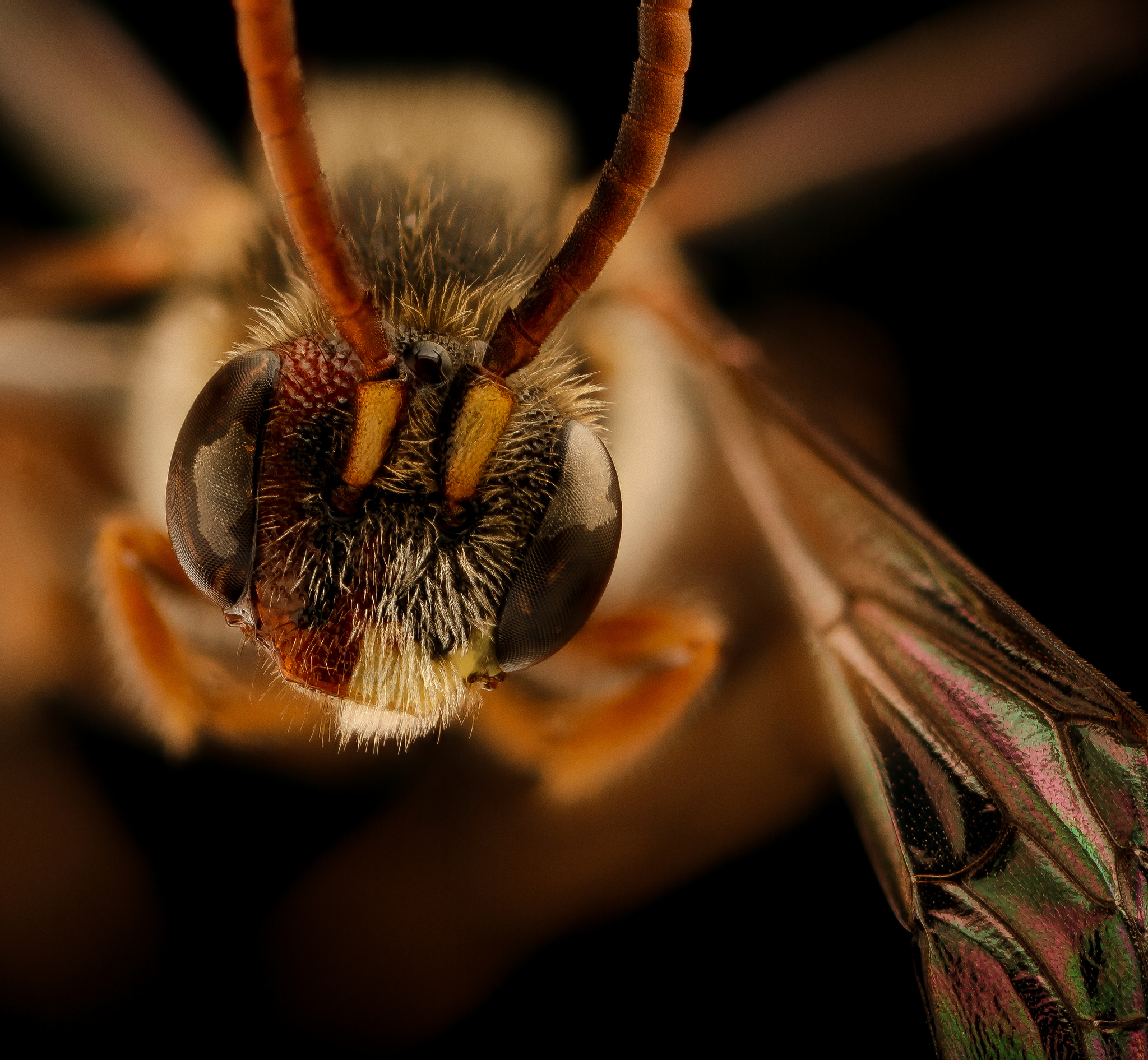
A Nomada species in Anne Arundel Co., Maryland (3/20/2019). "Intersex. Gynandromorph. Part Male: Part Female. Here is a lovely example. In this case the intersex section is restricted to the head. This is a Nomada of the pygmaea group. pygmaea group indicates that this is probably a group of species, but....I can't tell them apart...It was flying with a big group of its normal compatriots who almost certainly were checking out the Andrena miserabilis nesting there and all were out for an early spring warm spell. Look at the picture...red side of the head is female, yellow/black is male. Female has 12 antennal segments, male - 13." Collected by Don Harvey. Image processed by Anders Croft. Photo by
USGS PWRC. (
MBP list)

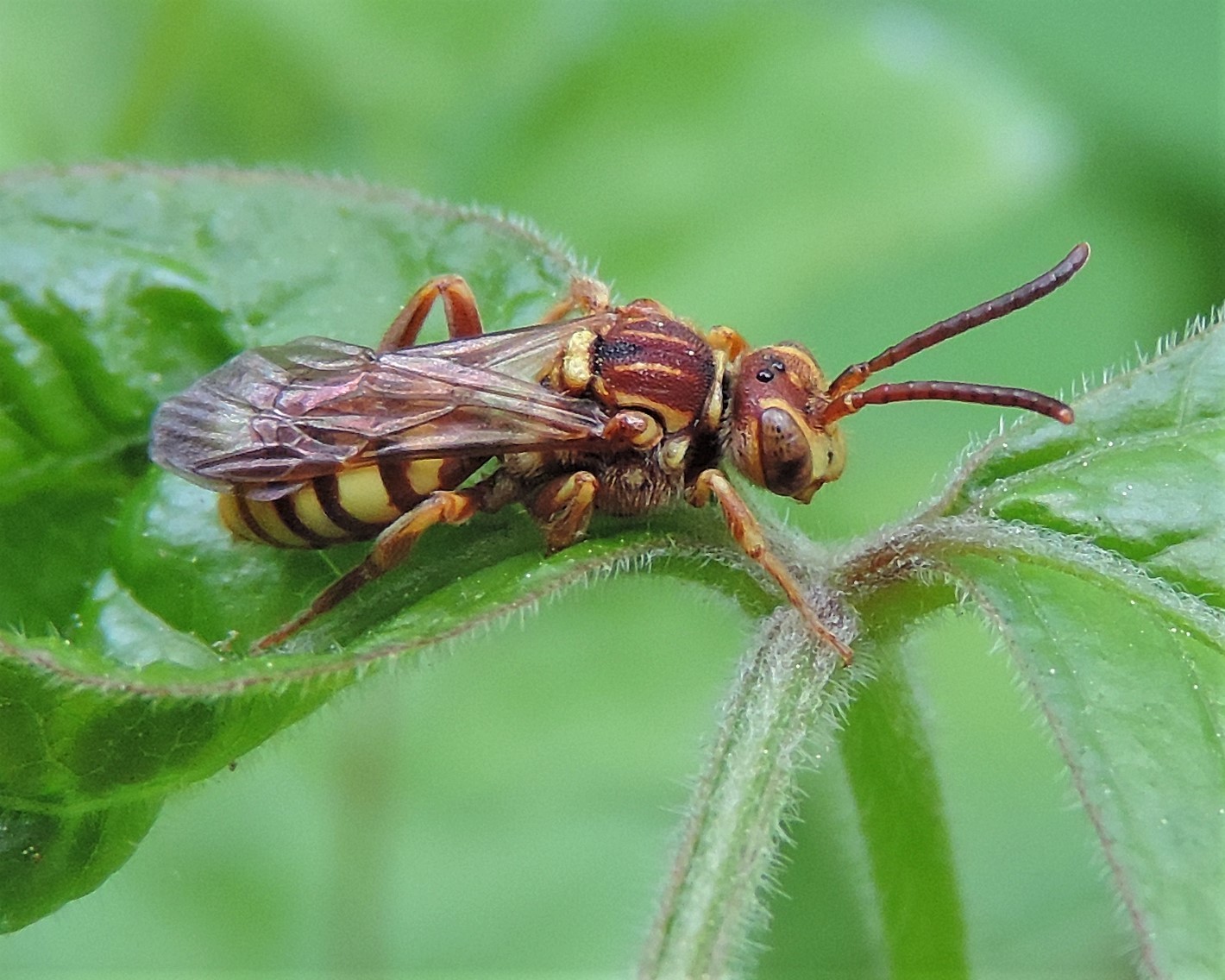
A Nomada species in Anne Arundel Co., Maryland (3/20/2019). "Intersex. Gynandromorph. Part Male: Part Female. Here is a lovely example. In this case the intersex section is restricted to the head. This is a Nomada of the pygmaea group. pygmaea group indicates that this is probably a group of species, but....I can't tell them apart...It was flying with a big group of its normal compatriots who almost certainly were checking out the Andrena miserabilis nesting there and all were out for an early spring warm spell. Look at the picture...red side of the head is female, yellow/black is male. Female has 12 antennal segments, male - 13." Collected by Don Harvey. Image processed by Anders Croft. Photo by
USGS PWRC. (
MBP list)

A Nomada species in Prince George's Co., Maryland (4/28/2019). Verified by Ken Wolgemuth/BugGuide. Photo by
Jim Moore. (
MBP list)

A Nomada species in Garrett Co., Maryland (5/23/2020). Verified by John S. Ascher and Ken Wolgemuth via BugGuide. Photo by
Jim Moore. (
MBP list)

A Nomada species in Montgomery Co., Maryland (5/25/2020). Photo by
Jim Moore. (
MBP list)

Nomada species in Prince George's Co., Maryland (5/28/2022). (c) Sergei Drovetski, all rights reserved. Photo by
Sergei Drovetski. (
MBP list)

A Nomada species in Anne Arundel Co., Maryland (3/20/2019). "Intersex. Gynandromorph. Part Male: Part Female. Here is a lovely example. In this case the intersex section is restricted to the head. This is a Nomada of the pygmaea group. pygmaea group indicates that this is probably a group of species, but....I can't tell them apart...It was flying with a big group of its normal compatriots who almost certainly were checking out the Andrena miserabilis nesting there and all were out for an early spring warm spell. Look at the picture...red side of the head is female, yellow/black is male. Female has 12 antennal segments, male - 13." Collected by Don Harvey. Image processed by Anders Croft Photo by USGS PWRC. Photo by
USGS PWRC. (
MBP list)

A Nomada species in Calvert Co., Maryland (4/25/2020). Photo by
Jim Moore. (
MBP list)

A Nomada species in Washington Co., Maryland (5/2/2020). Photo by
Jim Moore. (
MBP list)

Nomada species in Anne Arundel Co., Maryland (5/1/2021). (c) Sergei Drovetski, all rights reserved. Photo by
Sergei Drovetski. (
MBP list)

Nomada species in Prince George's Co., Maryland (5/15/2021). (c) Sergei Drovetski, all rights reserved. Photo by
Sergei Drovetski. (
MBP list)

A Nomada species in Harford Co., Maryland (4/25/2016). Determined by John S. Ascher/BugGuide. Photo by
Shannon Schade. (
MBP list)

A cuckoo bee in the genus Nomada in Anne Arundel Co., Maryland (4/19/2012). Photo by
Brandon Woo. (
MBP list)
A Nomada species in Harford Co., Maryland (4/25/2016). Determined by John S. Ascher/BugGuide. Photo by
Shannon Schade. (
MBP list)

Nomada species in Anne Arundel Co., Maryland (6/6/2015). (c) treichard, all rights reserved. Photo by
Timothy Reichard. (
MBP list)

Nomada species in Prince George's Co., Maryland (5/15/2020). (c) Hans Holbrook, some rights reserved (CC BY-NC). Photo by
Hans Holbrook. (
MBP list)

Nomada species in Anne Arundel Co., Maryland (6/1/2020). (c) Timothy Reichard, all rights reserved. Photo by
Timothy Reichard. (
MBP list)

Nomada species in Anne Arundel Co., Maryland (3/26/2016). (c) Timothy Reichard, all rights reserved. Photo by
Timothy Reichard. (
MBP list)

View All Images
Use of images featured on Maryland Biodiversity Project is only permitted with express permission of the photographer.





















